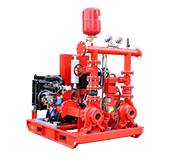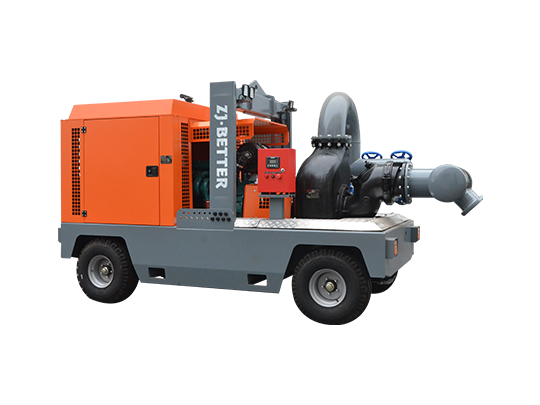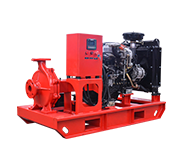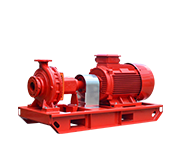A diesel engine fire pump is a type of pump commonly used for firefighting applications. It is designed to provide a reliable and independent source of water supply for firefighting operations in areas where a reliable water source is not readily available or where an existing water supply may be inadequate.
.jpg)
Here's a simplified explanation of how a diesel engine fire pump typically works:
1.Diesel Engine: The pump system is driven by a diesel engine, which provides the necessary power to operate the pump. The diesel engine is typically air-cooled or liquid-cooled and is designed to be durable and reliable.
2.Fuel Supply: The diesel engine requires a fuel supply to run. Diesel fuel is stored in a tank connected to the engine, and it is supplied to the engine's fuel injection system.
3.Starting Mechanism: The diesel engine has a starting mechanism, such as an electric starter motor or a manual crank, to initiate the engine's operation. Once started, the engine continues to run until manually stopped.
4.Intake and Exhaust: The engine has an intake system to draw in air and an exhaust system to expel combustion gases. The air intake provides the necessary oxygen for the combustion process, while the exhaust system allows the gases to exit the engine.
5.Combustion and Power Generation: Within the engine, the air-fuel mixture is compressed and ignited by the heat generated during compression. This combustion process produces high-pressure gases that expand, driving the pistons within the engine. The reciprocating motion of the pistons is converted into rotary motion through a crankshaft, which is connected to the pump system.
6.Pump System: The rotary motion from the engine's crankshaft is transmitted to the pump system, typically through a mechanical coupling or a belt-drive arrangement. The pump system consists of an impeller or multiple impellers enclosed in a casing. As the impeller rotates, it creates a centrifugal force, which draws water into the pump and then discharges it at high pressure through an outlet.
7.Water Supply and Suction: The pump system is connected to a water source through a suction pipe. The suction pipe is immersed in a water supply, such as a lake, river, or dedicated water tank. The impeller creates a low-pressure zone that draws water into the pump through the suction pipe.
8.Discharge: The high-pressure water is discharged from the pump through a discharge pipe, which is connected to hoses or other firefighting equipment. The water can be directed to firefighting nozzles, sprinkler systems, or other devices to extinguish fires.
9.Control and Monitoring: The diesel engine fire pump usually has control and monitoring systems to ensure proper operation. These systems may include controls for starting, stopping, and regulating the engine speed, as well as monitoring instruments to measure parameters like water pressure, engine temperature, and fuel level.
It's important to note that the actual design and configuration of a diesel engine fire pump can vary depending on the manufacturer and specific requirements. The above description provides a general overview of the main components and their functions.






